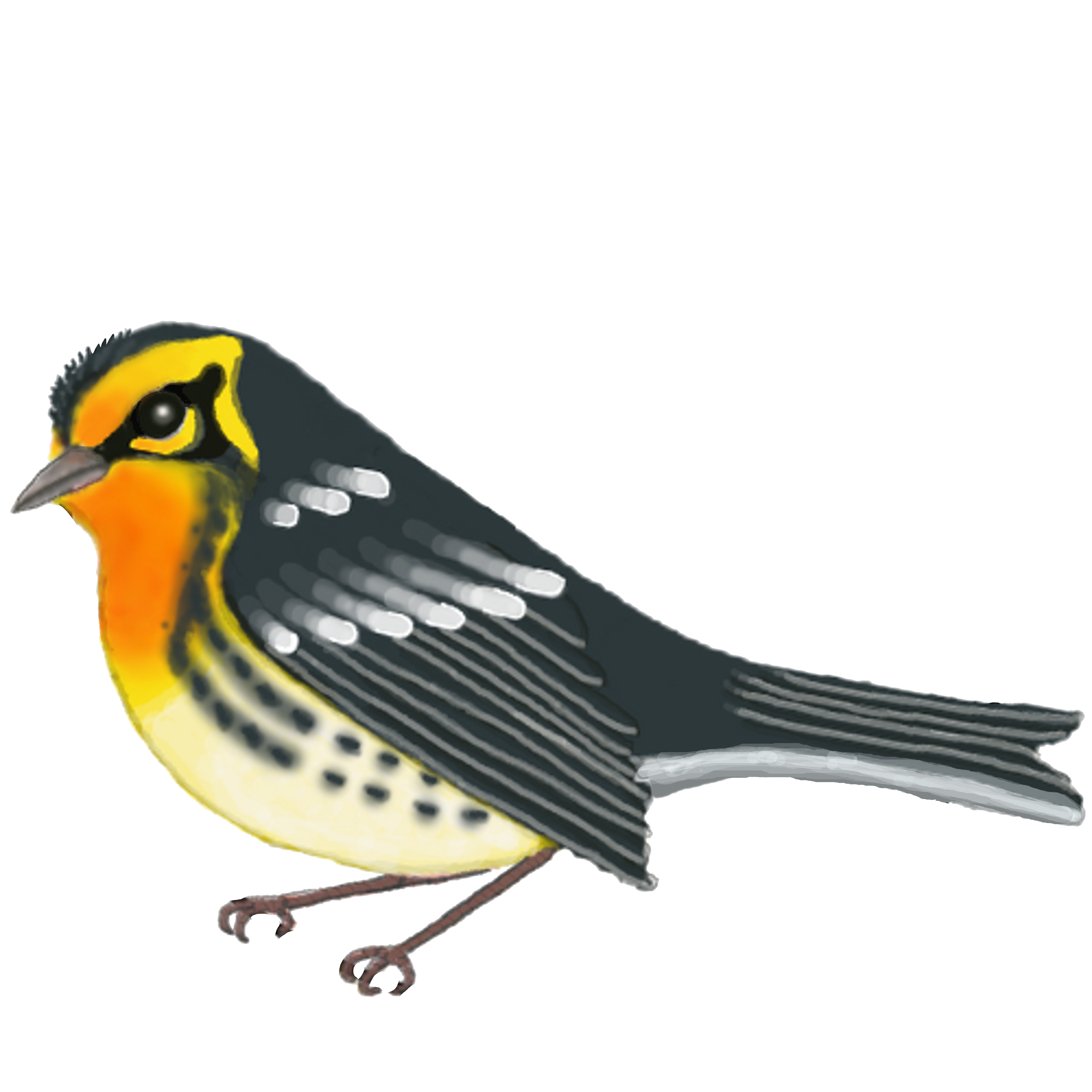What Are Lichens?
Lichens are strange and ancient life forms. Each one is a union between one or more fungi and either an alga or a bacterium, the whole quite different than the parts.
Some lichens are leafy as a head of lettuce, others a thin skim on bark or rock or soil. Some lichens can live and thrive in all sorts of conditions, but others require conditions that only the interiors of very old forests can provide.
Eons before forests existed, lichens, anchored to rocks, gathered dust and fragments, making soil. As trees grew in the new soil, lichens evolved with them, finding homes on trunks and twigs, in cracks and cavities. The older a forest, the more nooks and crannies it offers, and the more kinds of lichens find places to grow.
Why are lichens important to forests?
Lichens play an important part in our forest ecosystems, providing food for moose and deer during harsh winters as well as supplying nest-building materials for flying squirrels and the migratory Northern parula.
Lichens can also tell us about the conditions in our forests. Because they feed by absorbing whatever lands on their surfaces, lichens are vulnerable to air pollution, some more than others. Thriving populations of these species indicate clean air.
Species At Risk (SAR) Lichens – Nova Scotia
The Citizen Scientists of Southwest Nova Scotia have observed and reported examples of the following SAR lichens in the forests around Goldsmith Lake and Beals Brook: Frosted Glass-whiskers lichen (Scelophora peronella), Blue felt lichen (Pectenia plumbea), Black foam lichen (Anzia colpodes), and Wrinkled shingle lichen (Pannaria lurida).
Frosted Glass-whiskers (Sclerophora peronella)
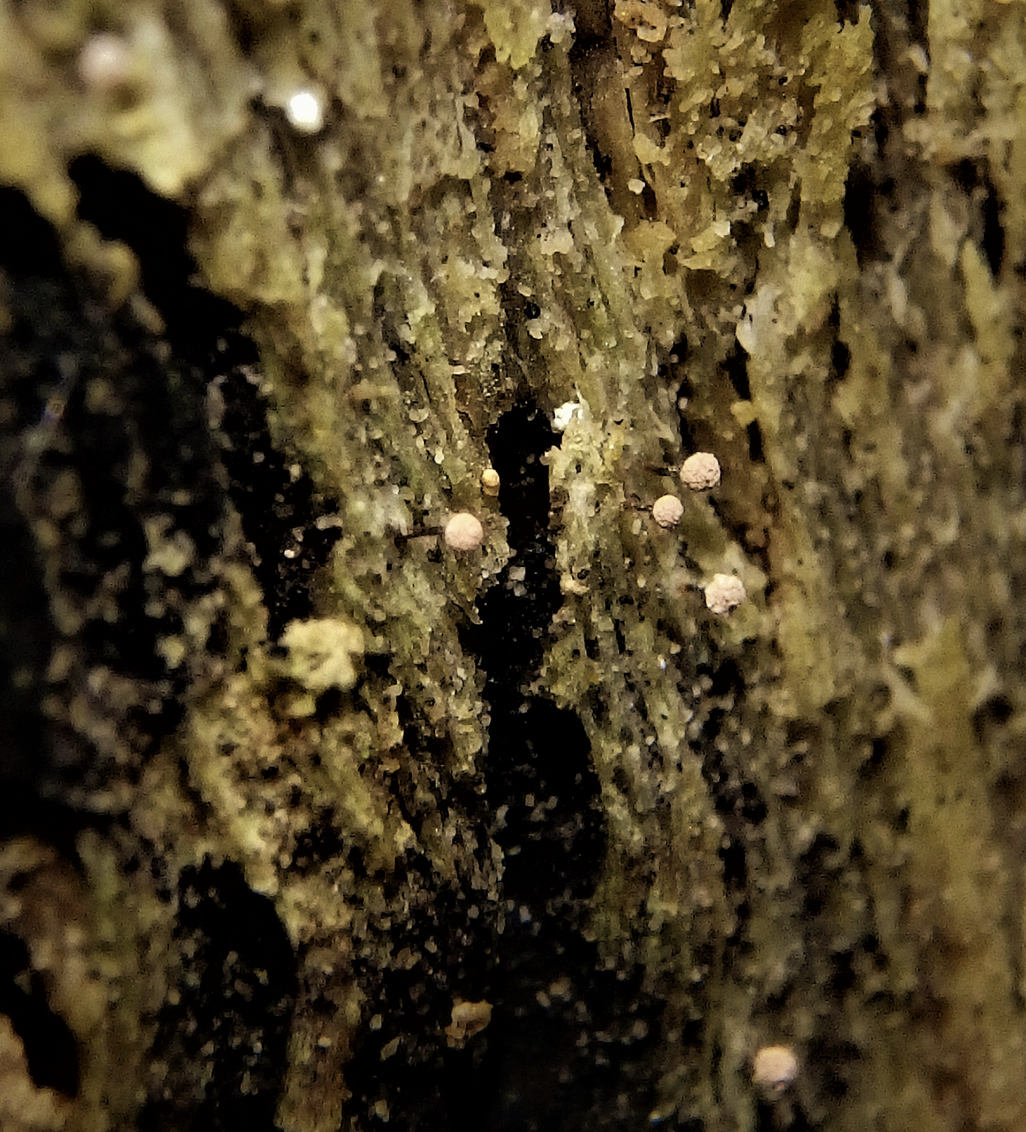
- The lichen is tiny – less than 1mm tall
- Needs old forest habitat with stable humidity and relatively small temperature fluctuations
- It grows on the exposed heartwood of mature hardwood (yellow birch and red maple) trees
- Classified as a Species at Risk by Environment Canada which has developed a Management Plan for the populations in Nova Scotia
- Photo Credit: Ashlea Viola
Blue felt lichen (Pectenia plumbea)
- Provincial lichen of Nova Scotia;
- In Canada only occurs in Atlantic region;
- Conservation status in Nova Scotia vulnerable to extinction;
- Found on hardwoods especially maple, ash, oak and yellow birch;
- Usually in old forest often in swamps, near standing water and humid areas, especially near the coast;
- Sensitive to air pollution and acid rain.
- Photo Credit: Jonathan Riley
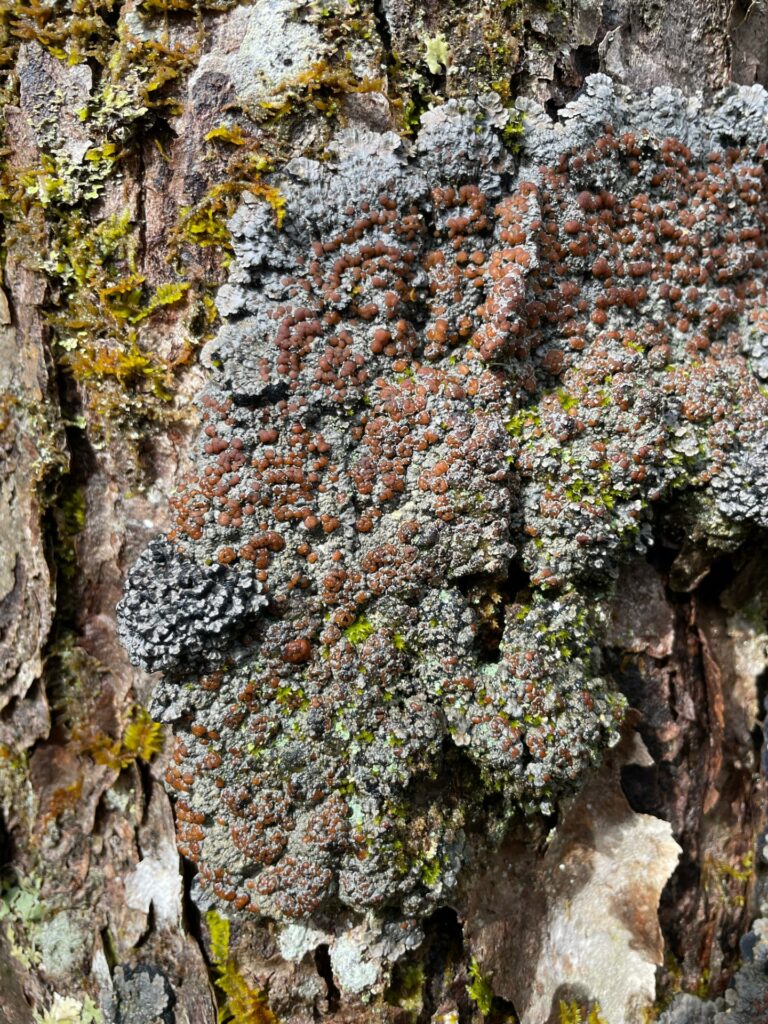
Black foam lichen (Anzia colpodes)
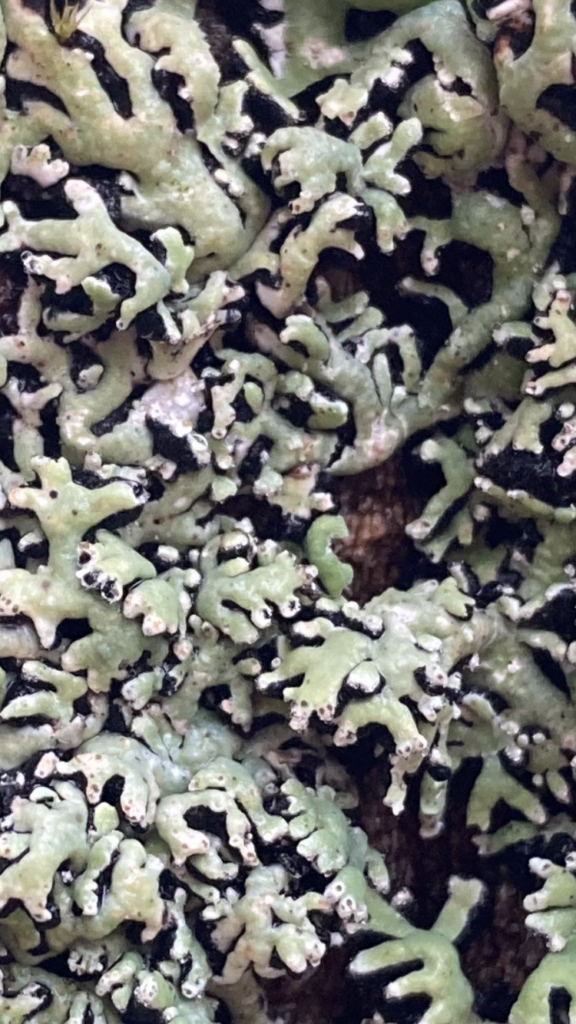
- In Canada had been observed in ON, QC and NB but now appears to be restricted to just Nova Scotia;
- Conservation status in Nova Scotia threatened with extinction;
- Found on mature hardwoods like red maple (in swamps) or red oak in uplands near wet/humid areas;
- Research indicates it may be associated with old growth forest;
- Main threat is deforestation.
- Photo Credit: Eleanor Wynn
Wrinkled shingle lichen (Pannaria lurida)
- In Canada it is mostly found just in Nova Scotia, but there are a few occurrences in NB;
- Conservation status in Nova Scotia threatened with extinction;
- Found on mature red maple and trembling aspen, in poorly drained locations or near but not usually in swamps;
- Primary threat is harvesting of hardwood forest.
- Photo credit: Troy McMullin
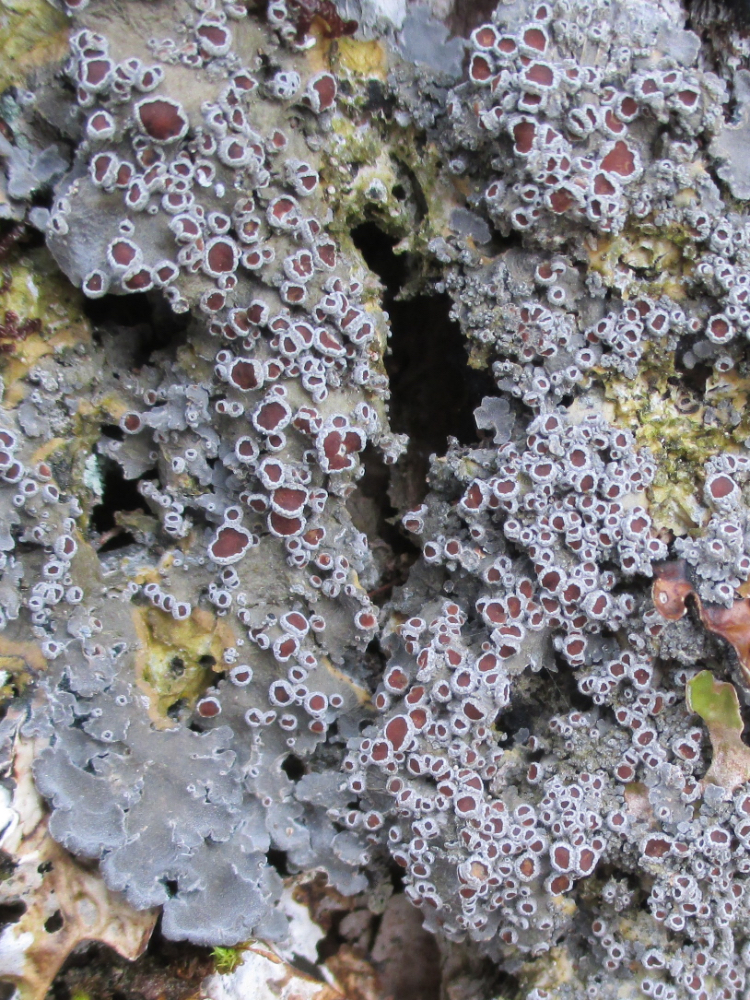
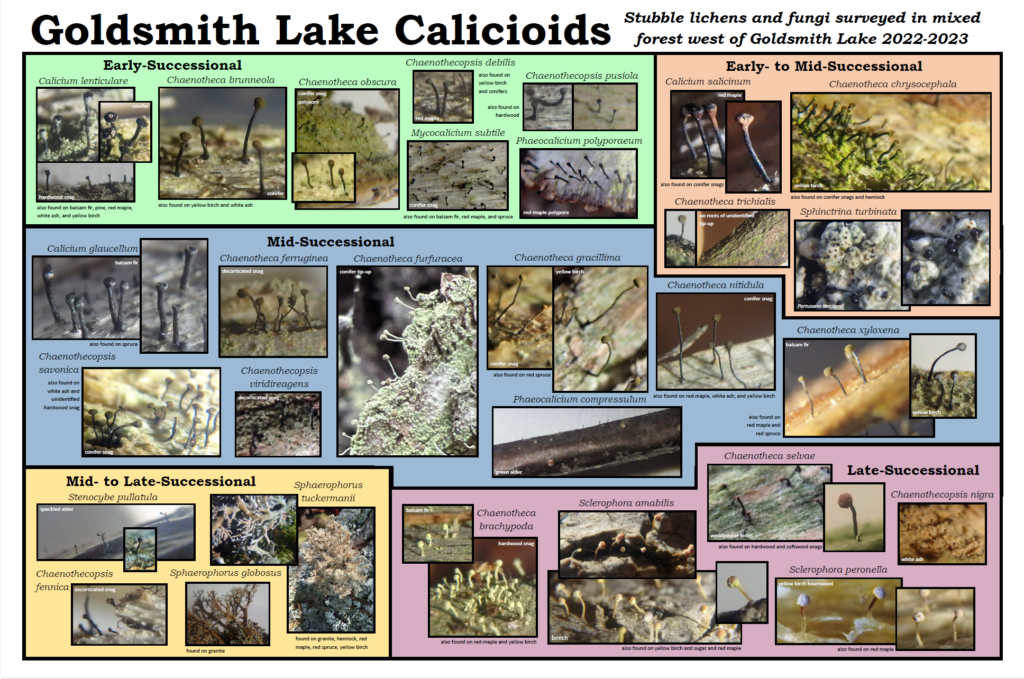
Lichens are far from the only endangered species that need old forests. In Nova Scotia almost every species that depends on old forests, from the Blackburnian warbler to the American marten to the mighty Mainland moose, is in steep decline. The best way we can protect those species is to protect and restore the habitat they depend on: intact old forests.
The best way we can protect our own species is to change the way we relate to nature. We are a part of nature, never separate. What we do to the rest of nature we do to ourselves.
